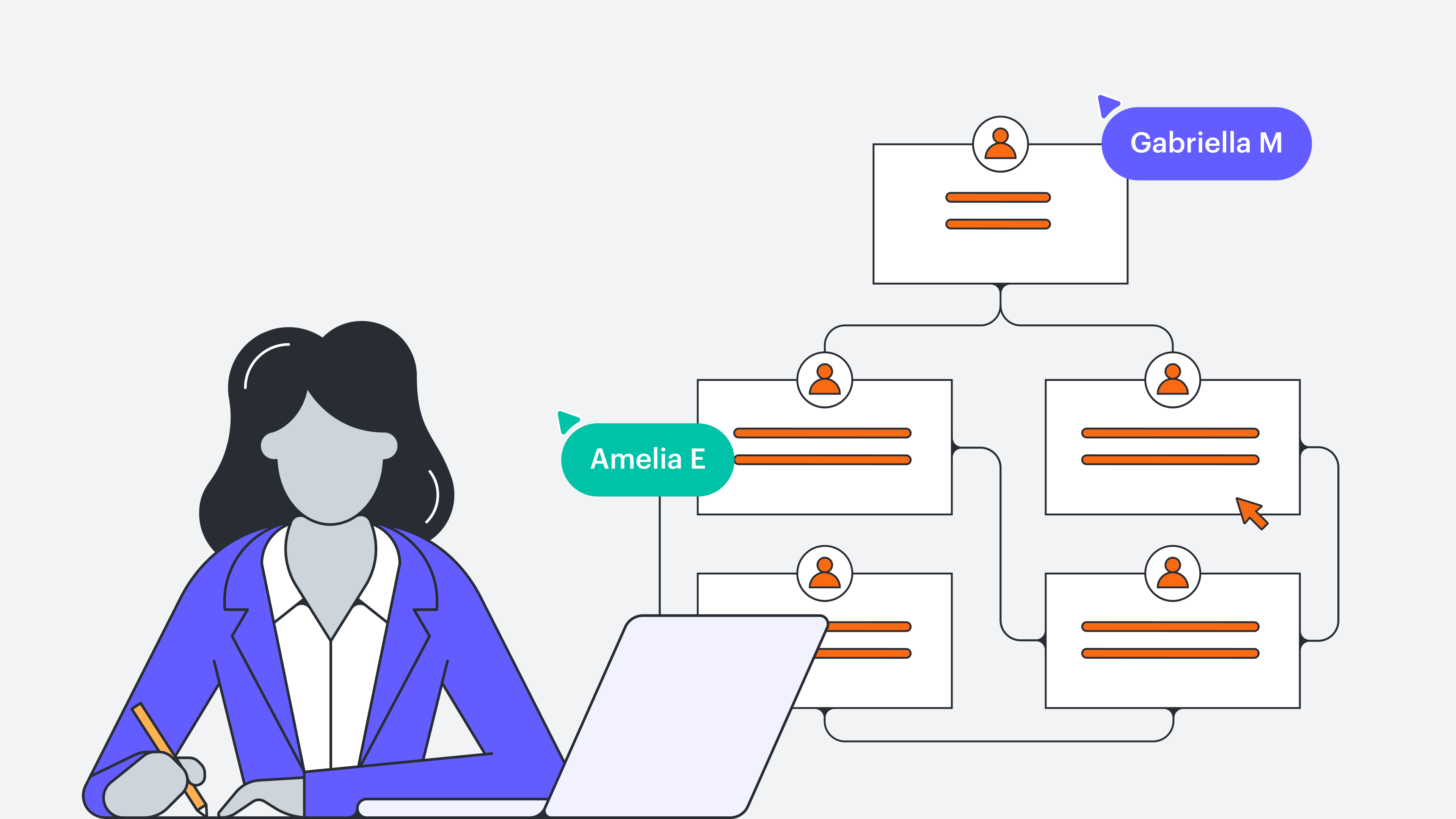HR might be the most confusing department in your whole organization—everyone knows they’re important, but very few employees know why.
So what does HR do?
An engaged and effective healthy human resources department helps drive company the growth and support employees. Contrarily, a distant HR department misses the chance to make a positive impact and gets a bad rep for not advocating for workers.
Let's look at HR roles and responsibilities in detail to help you understand this department and how it serves employees. If you’re an HR professional, we’ve included some free, customizable templates to help your team stay organized and aligned.
What is an HR department?
In simplest terms, the HR department is the function of a business that is responsible for managing the employee life cycle (i.e., recruiting, hiring, onboarding, training, and firing employees) and administering employee benefits.
What does HR do?
Human resources is there to support employees. More than just enforcing rules, the HR department fosters a positive working environment, keeps employees safe, and helps them succeed. It’s quite literally a resource for humans.
Here are some of the tasks your HR department is responsible for:
1. Recruiting candidates
HR is responsible for understanding the organization’s needs and ensuring those needs are met when recruiting for new positions. It’s more than posting an ad on Indeed: they’ll need to analyze the market, consult stakeholders, and manage budgets beforehand.
Once the role is advertised, additional research is needed to ensure that the right candidates are being attracted. Recruiting is a time-consuming—and costly—undertaking; the right candidate can revitalize an organization, while the wrong one can disrupt operations.

Plan a more effective recruitment process with these 6 essential steps.
Learn how2. Hiring the right employees
Human resources is in charge of scheduling interviews, coordinating hiring efforts, and onboarding new employees. They’re also in charge of making sure all new hire paperwork is filled out properly so that their first day—and every day thereafter—is navigated successfully.

3. Process payroll
Payroll is another top priority for the HR department. When it's payday, HR must:
-
Deduct taxes
-
Collect total hours
-
Reimburse expenses
-
Factor in raises and bonuses
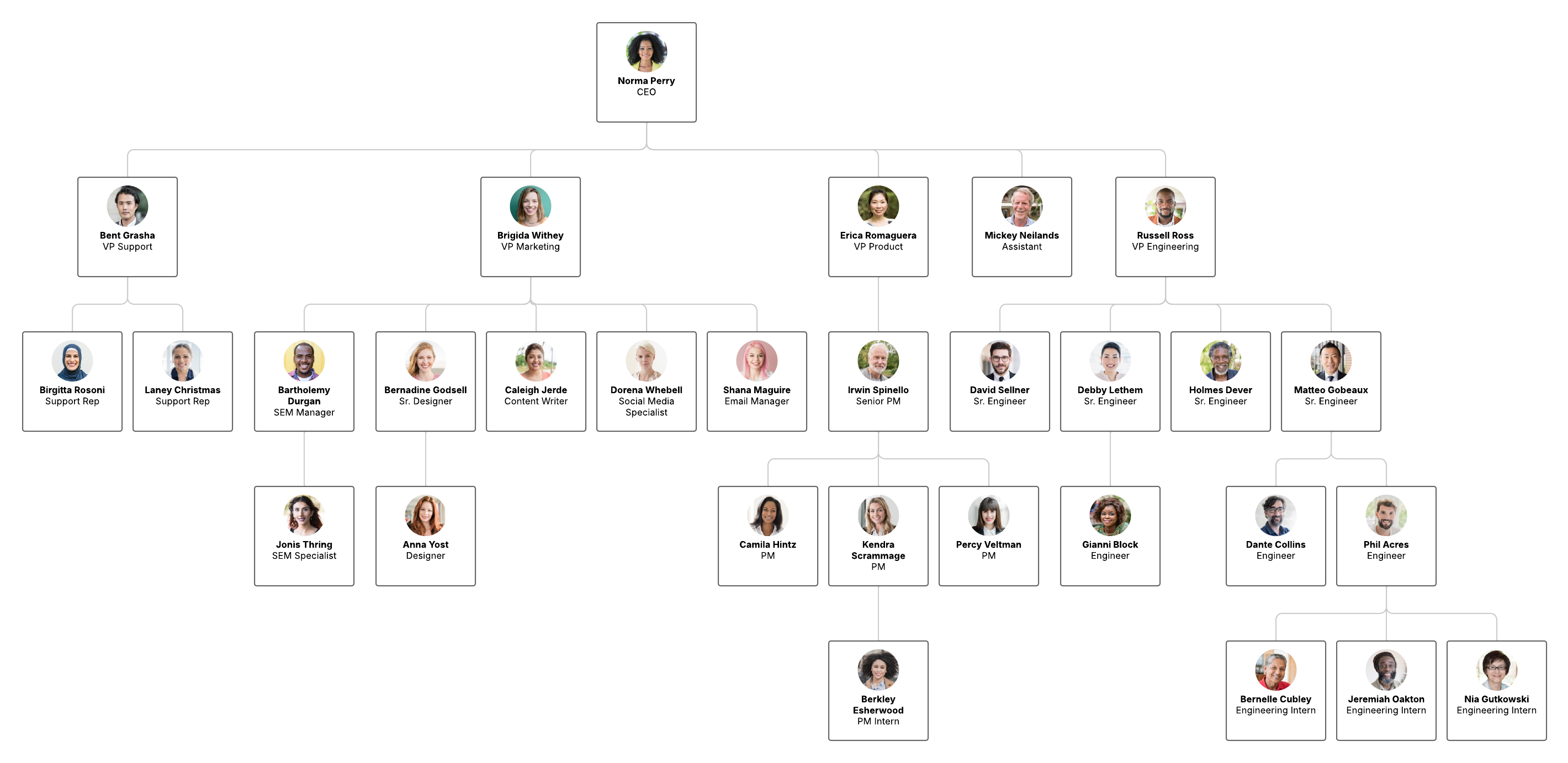
4. Conducting disciplinary actions
When handled inappropriately, disciplinary actions can lead to the loss of a valuable employee and even result in litigation or a poor reputation. However, when handled appropriately, disciplinary action can result in an employee's long-term success.
For instance, if a company notices that a particular employee is routinely late and continues being late even after the employee has received several warnings, HR could step in and investigate the reason for the tardiness. It may be an opportunity to extend benefits such as counseling to the employee or offer additional resources to help the employee learn to be on time. Instead of taking on the cost of firing and then recruiting a replacement for that employee, it could be a learning opportunity that could enhance that employee’s career.
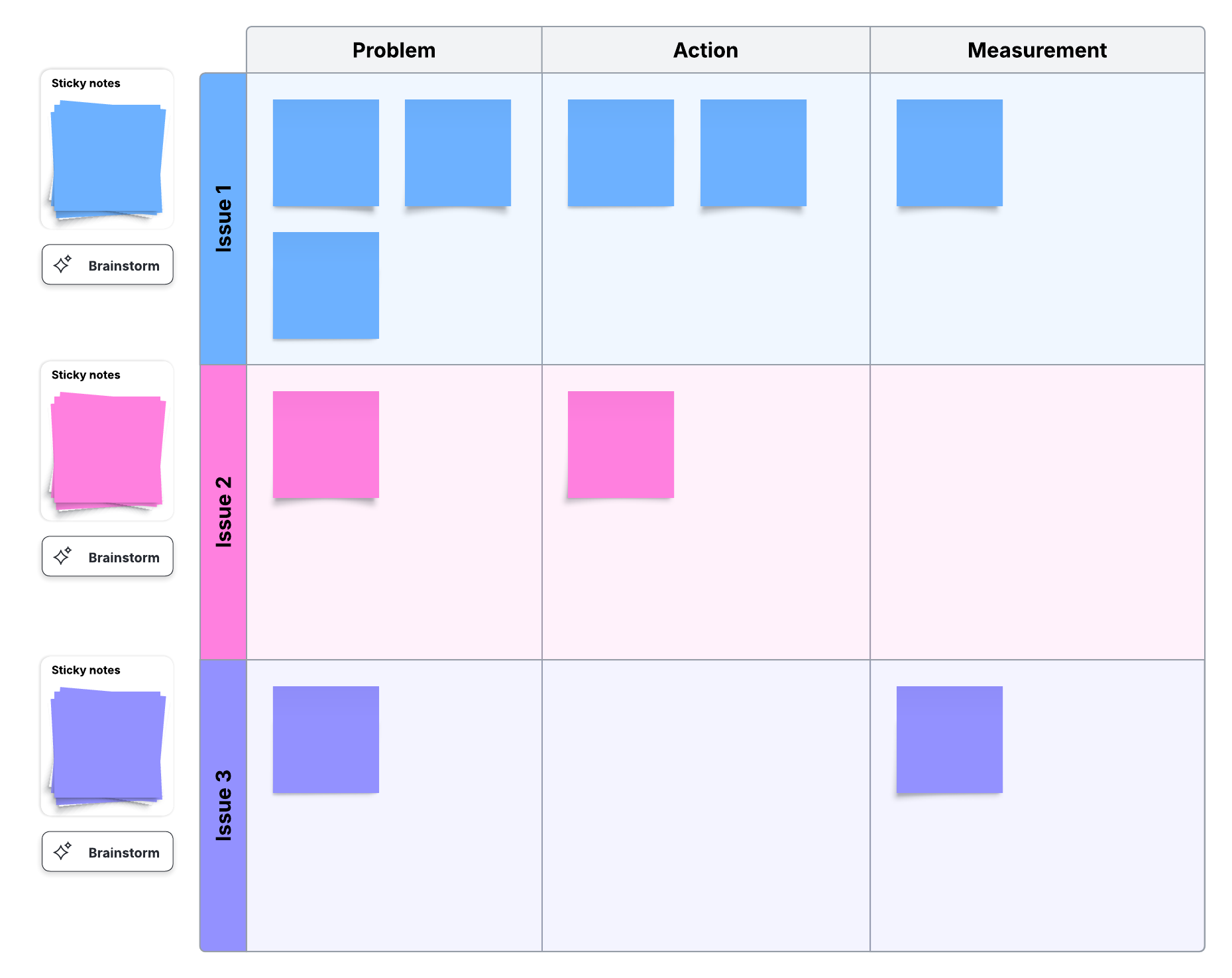
On the other hand, sometimes disciplinary action isn’t the best course to take and an employee should be let go. The best human resources departments know when an employee isn’t the right fit for a company and would be happier somewhere else.

The disciplinary process can be tough. Learn how to give consistent warnings and feedback to improve performance.
Read more5. Updating policies
Policies should be revisited every year as the organization changes. It’s HR’s job to make official updates to policies and to suggest changes to policies when they no longer serve the company or the employees. Sometimes a policy should be updated as a reaction to an occurrence. HR should always be included in and consulted with regarding these decisions.
6. Maintaining employee records
Maintaining HR records is mandated by law. These records help employers identify skill gaps to help with the hiring process, analyze demographic data, and comply with regulations. They also contain personal details and emergency contacts for each employee.
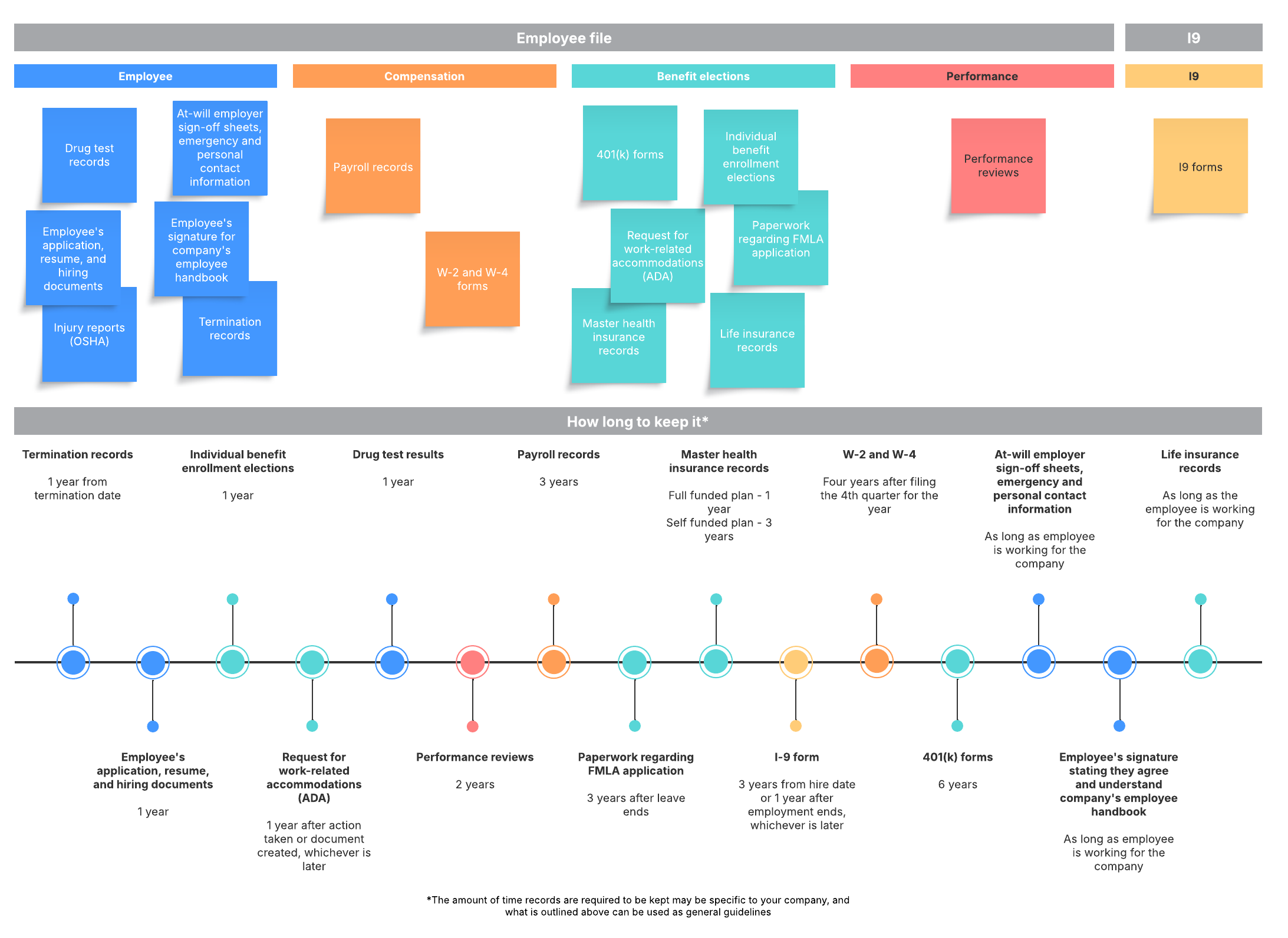
7. Conducting benefit analysis
Staying competitive is crucial when trying to attract the best talent. A promising recruit may choose a different company with lesser pay if the benefits are more attractive. HR should routinely investigate similar companies to see if their benefits are competitive.
How does human resources support employees?
In addition to the seven examples above, which are mostly operational responsibilities, HR provides other functions to help employees thrive.
After all, employees are the single biggest asset to any organization. It follows, then, that protecting their well-being is of utmost importance. Here are four ways HR helps support the emotional and career needs of employees:
1. Providing career growth
Stagnation can hurt both employees and the business which is why career growth is so important. HR can provide career paths to help guide each employee to a long, successful future within the company. They can provide regular check-ins to further guide employees on their career paths.
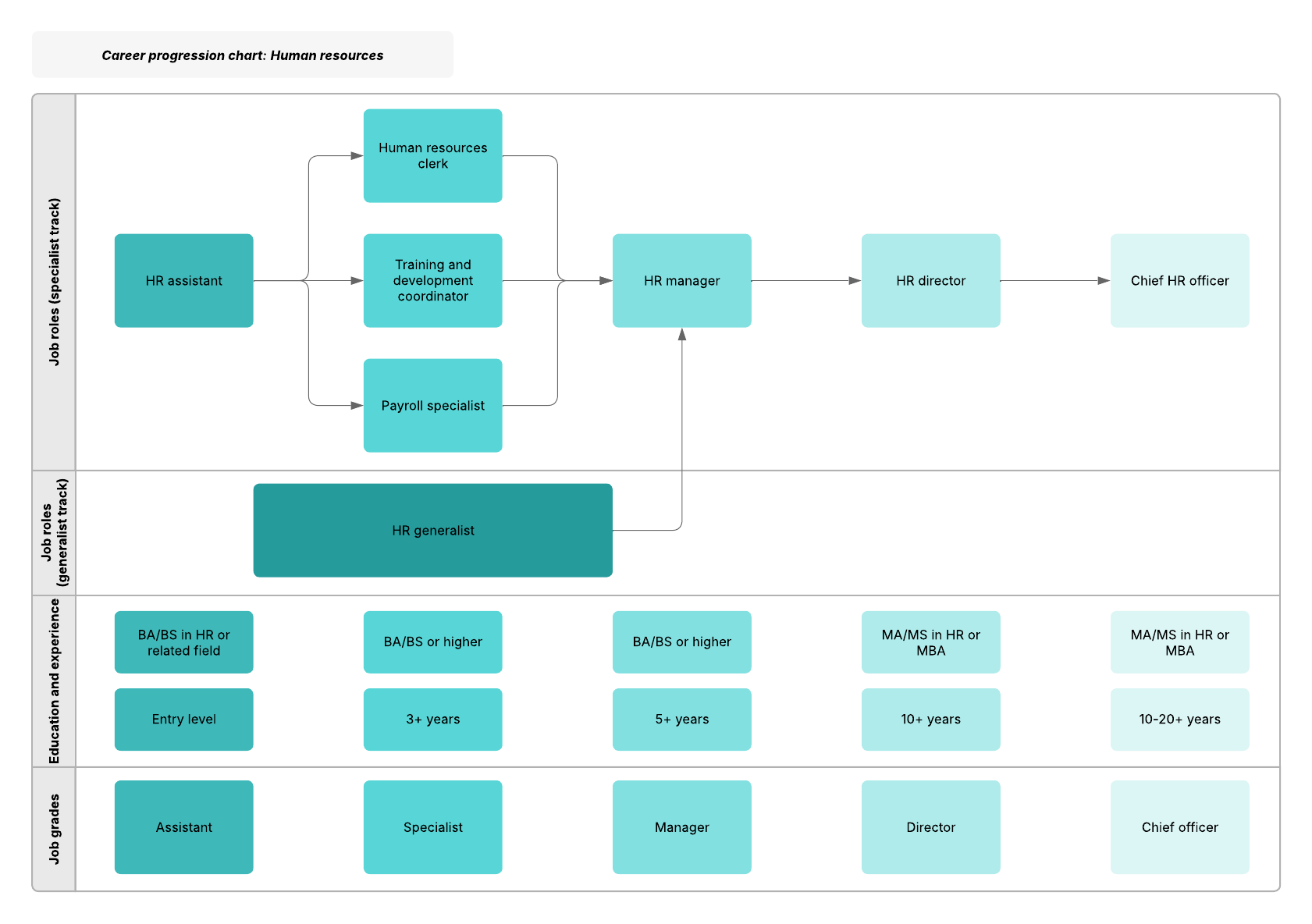
2. Offering continuing education
Sometimes the career growth mentioned above requires additional training. Your organization may provide educational assistance, and HR can help determine which classes and training programs would be best for an employee on his or her designated career path. HR can also work with managers to ensure that the employee’s work schedule is flexible enough to allow the employee to attend classes.
3. Training and supporting managers
Managers aren’t born, they’re created. HR can help provide guidance to managers, ensuring that departments and teams are as effective and functional as possible. This may include periodically sending managers to formal training and retreats.
4. Supporting health and wellness
It’s important to remember that employees are people. They may need support surrounding mental and physical health, family matters, and myriad other life occurrences. HR's job is to navigate these circumstances alongside employees to help them feel cared for.
When to contact human resources
A disengaged HR department isn’t doing its job. While you’re developing an onboarding procedure, educate new employees on when to reach out to HR and what resources HR has to offer. The HR department should regularly schedule one-on-one interviews with employees to check in on their career progression, provide guidance, and address any other issues the employee may be having.
Considering these responsibilities, employees should feel comfortable reaching out to their HR departments in these, and similar, situations:
- When you (or a co-worker) experience harassment or discrimination from your colleagues.
- When you have questions about benefits, including company-provided health insurance or rights guaranteed by law.
- When your personal circumstances change (e.g. having a child, needing to reduce your hours, needing accommodation for a disability).
- When you have questions about advancing at the company, including opportunities to shadow other employees or participate in additional training.
- When you need an objective third party to work through a work-related issue.
The human resources department heavily contributes to a company’s culture. If HR genuinely cares about the well-being of employees, the culture will be one of openness and growth.
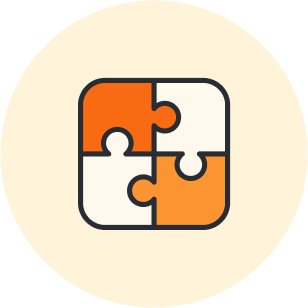
Looking to evolve your HR department? Find out how HR can be more agile.
Learn moreAbout Lucidchart
Lucidchart, a cloud-based intelligent diagramming application, is a core component of Lucid Software's Visual Collaboration Suite. This intuitive, cloud-based solution empowers teams to collaborate in real-time to build flowcharts, mockups, UML diagrams, customer journey maps, and more. Lucidchart propels teams forward to build the future faster. Lucid is proud to serve top businesses around the world, including customers such as Google, GE, and NBC Universal, and 99% of the Fortune 500. Lucid partners with industry leaders, including Google, Atlassian, and Microsoft. Since its founding, Lucid has received numerous awards for its products, business, and workplace culture. For more information, visit lucidchart.com.
Related articles
Aligning human resources and business strategy
Few departments have a better bird’s-eye view of the entire organization than human resources. Learn what part human resources plays in the strategic planning process and how HR professionals can align their goals with the overall company strategy.
4 steps to strategic human resource planning
Many CEOs believe that their employees are the most important factor in their company’s economic success, so if you want to succeed, find and keep the best talent. Learn how to develop your strategic human resource plan.
How to make a career plan [+templates]
Successful careers are often the result of planning. Here’s how you can make a career plan (plus some templates you get you started).
How to build a recruitment process
The success of your organization depends on the people you choose to build it. Learn how you can visualize your recruitment process and hire top talent.

